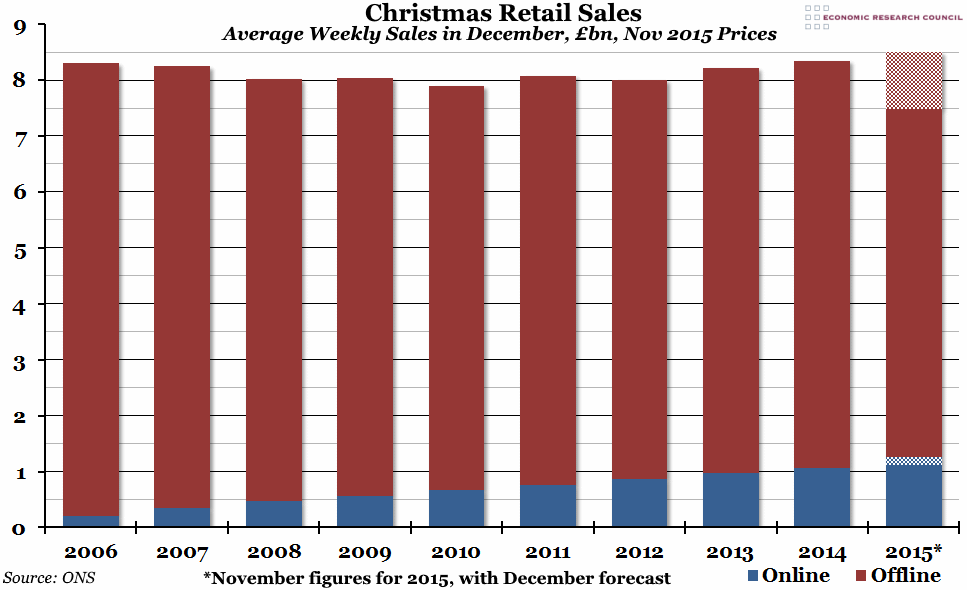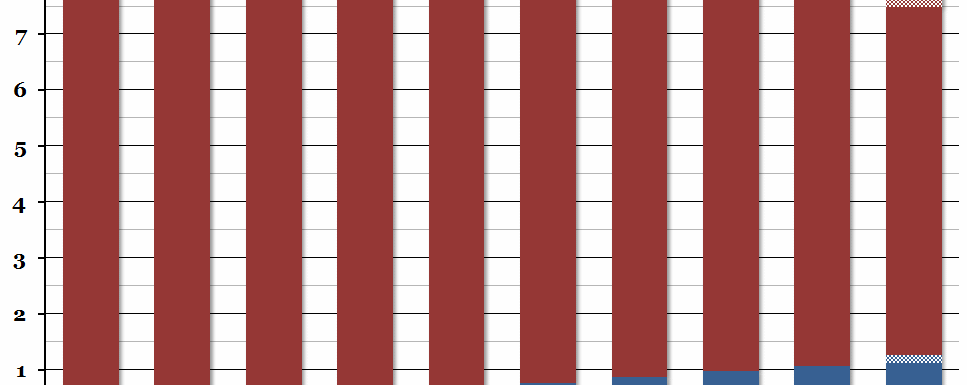
Summary
Every year, retail sales spike in December in the UK as people spend money on presents and preparations for Christmas celebrations. This year, online sales have already surpassed their 2014 levels, and it looks like total weekly spending might top £8.5bn this December.
What does the chart show?
Each bar represents average weekly retail spending in December of the respective year, in billions of pounds, and in the equivalent of today’s prices (so inflation is taken into account). The blue section of each bar represents online retail sales, while the red section is offline sales. For 2015, the solid sections of the bar represent November sales, rather than December, while the chequered sections represent a forecast for December based on comparing this November with previous ones.
Why is the chart interesting?
December is the most important month for retail sales every year, and while of course not all of this is Christmas spending, a large proportion is. In the years immediately following the financial crisis, retail spending fell, but since the low point in 2010 it has been increasing every year (except for a small dip in 2012). 2014 was the first post-crisis year where December spending beat 2006 levels in real terms. We don’t yet have December figures for 2015, but already in November more was spent online than in December 2014, which suggests that the strong growth of online retailing has continued from an almost irrelevant proportion of total spending in 2006 (incidentally, one might assume that online Christmas spending might happen earlier than offline spending, and that November would be a bigger month than December in that regard, but that has not been the case in previous years).
We’ve included a forecast for December spending in this week’s chart, which suggests that total retail spending might surpass £8.5bn per week this month. Of course, this assumes that people’s habits haven’t shifted significantly, and that consumers in the UK haven’t bought all their Christmas presents early this year. Based on a quick survey of our office, and by the number of people still doing their shopping in Central London this week, this seems like a pretty fair assumption.

